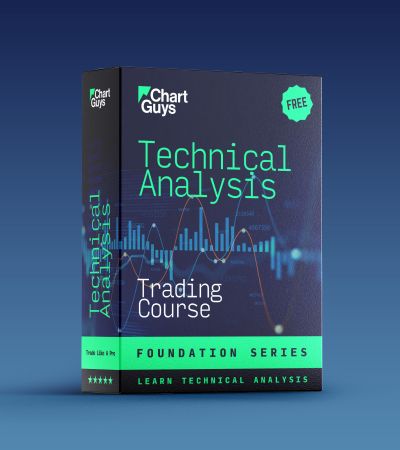-
The stock and futures market is made up of a complex number of purchases, contracts and hedges through multiple participants. Each party has its own strategies and practices which when combined produce certain market dynamics
-
Quad witching marks the expiry date of futures contracts, stock options contracts and futures options all occurring on the same day.
-
Long term investors have little to worry about, but short term strategy traders can capitalize on trends from the week prior, day of, and up to the week after quad witching.
-
Trends from the past two years suggest the most bullish day leading up to quad witching is the Wednesday prior, while the day itself tends to be a red one.
What is quad witching?
Quadruple witching (quad for short) refers to a date in the stock market when the expiry of single stock option contracts, index futures contracts and index futures contract derivatives (options on indices futures) all happen on the same day. Technically speaking, it is now triple witching, since the fourth type of contract expiry, single stock futures contracts, don’t trade anymore in the US. Despite this, the name quad witching has stuck around as this change has only happened in the last few years. Thus quadruple and triple witching are now interchangeable terms.
What are the four quad witching days?
Quadruple witching days occur on the third Friday of March, June, September, and December of each year.
For 2024, the quadruple witching days are:
- March 15, 2024
- June 21, 2024
- September 20, 2024
- December 20, 2024
What happens during quad witching?
While you can hold a stock forever, options and futures are contracts that have an expiry date in which the buyer and seller agree to exercise those contracts if they hold them to expiry. Both options and futures contracts tend to be used as hedges in large investment portfolios, so the day of expiry is a time for repositioning these hedges, or rolling them out to later dates. While investment portfolios hedge their stock positions using options and futures contracts, market makers who sell these options also have to hedge their positions to maintain a neutral stance in the market with other options, and buying or selling the underlying. The unwinding of hedges from both sides to secure their positioning naturally, and noticeably, increases the volume in the markets on quad witching days.
The volume is the heaviest during the last hour of the day as traders adjust their portfolios.
Often it is the job of portfolio managers to keep their portfolios adjusted to the performance of the broader markets, and often they adjust the portfolios quarterly, which lines up with the timing of quadruple witching and further increases the trading volume.
Peculiarities of quadruple witching
Futures options, unlike stock options, are cash settled, and can only be exercised on expiration date. Stock options can be exercised at any time. Futures and stock contracts involve a complex design of many major participants. Some selling them, some using them as hedges, and some arbitraging the price discrepancies via large amounts of trading. All of this unwinding close to expiry can cause some wide bid/ask spreads and uncertainties at the end of quad witching days.
One of the main uncertainties is around large volume strike option expiries. Certain contracts, especially around psychologically round numbers will have a very heavy amount of contracts still and open and ready to expire. For example a stock trading near 50 dollars will likely have large open interest around the 50 dollar contract strike. Participants will be unsure of whether or not they will be assigned shares based on how the contracts expire. A contract that expires just one cent in the money can put dealers net short over the weekend, especially if they don’t know how many buyers will choose to exercise their options or close them out in order to roll them out to future dates. All of this leads to some interesting phenomena around quad witching and option expiring dates.
Is quad witching bullish or bearish?
The week before quad witching:
On the days leading up to quad witching, the combination of a heavy open interest and dealers being able to see where stocks are closer to expiry, thus not needing as much hedging exposure tends to support the underlying market with bullish flows. This is called gamma hedging, and is part of the nature of expiring products and the risk management of market makers and dealers. The week leading up quad witching, and option expiry in general is therefore usually thought of as a bullish trend in the market, with Wednesday before quad witching historically giving the most bullish returns.
The day of quad witching:
On the day of, these positions unwinding and uncertainties tend to lead to a phenomenon called pinning, or pin risk, where aggressive buying and selling right at the end of the day with large volume tries to pin the price of a stock or future to a price in order to secure maximum profits and decrease assignments over the weekend. The past few years of data show that the day of quad witching tends to be a down day, with the last two years of data according to schaefeffersresearch.com showing negative returns overall on the week of quad witching.
Widened bid and ask spreads and increased volume and positioning can cause some extra intraday volatile action which can be an opportunity for short term traders, but is essentially a non-event for longer term investors. Options strategies such as iron condors and butterflies are some strategies that traders will use to capitalize on potential pinning action.
The data over the last two years have shown some differing results compared to some regular option expiry dates, as described above, with market returns on quad witching weeks having statistically meaningful outsized negative returns. Instead, the pattern has suggested some bullishness into the Wednesday prior to quad witching, then weakness into Friday to end the week red. This has been a notable change in quad witching over the past two years compared to prior years, and compared to the more bullish action into regular monthly options expiry, with only 18% of 11 Friday quad witching days ending positive, and an average return of -.59% according to schaeffersresearch.com
The week after quad witching:
After option expiry dates, and therefore also quad witching, the same bullish flows that supported the market leading into the option expiries, with the gamma hedging, heavy volume and pinning disappearing, creates what is referred to as a window of weakness, where the market historically tends to see the lowest returns.
Key Points Summary
Quad witching, now technically triple witching, occurs four times per year on the third Friday of the end of each quarter. The combination of index futures and their derivatives expiring along side stock options expiring causes a high volume day in the markets as portfolios and market makers need to adjust their positioning due to these contracts ending. The positioning of funds and their hedges overall gives supportive bullish flows in the week leading up to quad witching. Pinning, high volume trading and contract rolling has shown in the past few years to lead to negative returns on the day of quad witching, particularly in the last hour. Traders can utilize this data to capitalize on short term price movement, pinning strategies and volatility.












